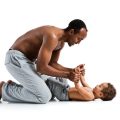Introduction to Chronic Back Pain in Seniors
Chronic back pain is a common issue for many older adults living in the United States. As people age, changes in the spine, muscles, and joints can increase the risk of ongoing discomfort. This type of pain can last for months or even years, making everyday activities harder and affecting quality of life.
Prevalence of Chronic Back Pain in Seniors
Back pain is one of the leading reasons older Americans visit their healthcare providers. Studies show that up to 50% of adults over the age of 65 report experiencing some form of chronic back pain. With the senior population growing rapidly, more families and communities are facing this challenge.
Impact on Daily Life
Chronic back pain can have a big impact on seniors independence and well-being. It may make it tough to walk, get out of bed, or even sit comfortably. Many older adults find it difficult to do favorite hobbies or take part in social activities because of ongoing pain.
| Area of Life Affected | Examples of Challenges |
|---|---|
| Mobility | Trouble walking, standing, or climbing stairs |
| Self-Care | Difficulty bathing, dressing, or cooking meals |
| Mental Health | Increased feelings of depression or isolation |
| Sleep Quality | Pain disrupts sleep patterns and restfulness |
Unique Challenges for Older Adults
Seniors often face special challenges when dealing with chronic back pain. These include:
- Aging-Related Changes: Bones become less dense, muscles weaken, and joints may become stiffer.
- Other Health Conditions: Many seniors have additional medical issues like arthritis or diabetes that can complicate pain management.
- Sensitivity to Medications: Older adults may be more likely to experience side effects from pain medications.
- Limited Access: Transportation problems or financial barriers can make it harder for some seniors to receive regular care.
The Importance of Evidence-Based Physical Therapy Approaches
Given these unique challenges, it is important to use physical therapy approaches that are backed by research and tailored to the needs of older adults. Evidence-based practices help ensure safe and effective treatment so seniors can improve function and enjoy a better quality of life.
2. Understanding the Causes and Risk Factors
Common Causes of Chronic Back Pain in Seniors
Chronic back pain is a frequent problem among seniors in the United States. As we age, our bodies go through many changes that can contribute to ongoing pain and discomfort in the back. Understanding these causes helps both seniors and their families make informed decisions about physical therapy and daily activities.
Age-Related Changes
Getting older brings natural wear and tear to the spine. The discs between vertebrae may lose water and flexibility, making them less effective as cushions. Joints in the spine can also develop arthritis, leading to stiffness and pain.
Lifestyle Factors
Daily habits play a big role in back health. Many seniors become less active over time, which can lead to weaker core muscles that support the spine. Poor posture, especially from sitting too long or using improper chairs, is another common factor.
Comorbidities
Seniors often have other medical conditions—like osteoporosis, diabetes, or obesity—that can increase the risk of chronic back pain. These conditions may affect bone strength, nerve health, or overall mobility.
Main Contributing Factors at a Glance
| Contributing Factor | Description | How It Affects Back Pain |
|---|---|---|
| Aging Spine | Disc degeneration and joint arthritis due to aging | Leads to stiffness, reduced flexibility, increased pain |
| Physical Inactivity | Reduced movement and weakened muscles | Poor support for spine increases risk of injury and pain |
| Poor Posture | Sitting or standing incorrectly for long periods | Puts extra strain on back muscles and spine structures |
| Osteoporosis | Bones become thin and brittle with age | Higher chance of spinal fractures causing chronic pain |
| Obesity | Excess body weight adds pressure to the spine | Can worsen existing back problems or create new ones |
| Chronic Diseases (e.g., diabetes) | Affect nerves and blood flow throughout the body | Makes healing slower and pain harder to manage |
Key Takeaway:
The causes of chronic back pain in seniors are often complex and involve more than one factor. By recognizing these risks early, physical therapists can tailor treatment plans that address each individuals unique needs.
![]()
3. Evidence-Based Physical Therapy Interventions
Managing chronic back pain in seniors requires a thoughtful and research-backed approach. Physical therapists in the United States use several evidence-based interventions to help older adults reduce pain, improve mobility, and maintain independence. Here’s a closer look at some of the most effective methods:
Manual Therapy
Manual therapy includes hands-on techniques performed by a physical therapist to relieve pain, increase joint movement, and relax tight muscles. For seniors with chronic back pain, gentle joint mobilizations and soft tissue massage are commonly used. Research shows that these techniques can provide short-term pain relief and help patients feel more comfortable during daily activities.
Common Manual Therapy Techniques
| Technique | Purpose | Benefits for Seniors |
|---|---|---|
| Joint Mobilization | Increase flexibility and reduce stiffness | Improved range of motion, decreased pain |
| Soft Tissue Massage | Relax tight muscles, improve blood flow | Pain relief, better muscle function |
| Myofascial Release | Release restrictions in connective tissues | Enhanced mobility, reduced discomfort |
Exercise Prescription
A personalized exercise plan is a cornerstone of physical therapy for seniors with chronic back pain. Current research supports the use of both strengthening and stretching exercises to build core stability, support the spine, and prevent further injury. Therapists design routines that fit each person’s abilities and health status.
Types of Exercises Used in PT for Back Pain
| Exercise Type | Examples | Main Benefits |
|---|---|---|
| Strengthening Exercises | Bridges, wall squats, resistance band rows | Stronger muscles to support the spine, improved balance |
| Stretching Exercises | Knee-to-chest stretch, gentle yoga poses | Reduced muscle tightness, increased flexibility |
| Aerobic Activity | Walking, stationary cycling, water aerobics | Better overall fitness, less inflammation, improved mood |
| Balance Training | Tandem walking, heel-to-toe stand | Fall prevention, greater confidence moving around home or outdoors |
Functional Training for Daily Activities (ADLs)
Seniors often struggle with everyday tasks due to chronic back pain. Functional training focuses on practicing real-life movements like getting out of bed, standing up from a chair, or carrying groceries safely. Physical therapists teach proper body mechanics and offer adaptive strategies so seniors can remain independent as long as possible.
Main Elements of Functional Training:
- Lifting techniques: Learning how to pick up objects without straining the back.
- Sitting and standing: Safe ways to transition between sitting and standing positions.
- Bending and reaching: Strategies to avoid twisting or bending awkwardly while doing chores.
Seniors benefit most when manual therapy, exercise prescription, and functional training are combined into a customized treatment plan. Working closely with a licensed physical therapist ensures each intervention is safe and suited to individual needs.
4. Adaptations for Older Adults
When it comes to physical therapy for chronic back pain in seniors, its important to tailor each intervention to the unique needs of older adults. Many seniors have age-related changes such as decreased flexibility, reduced muscle strength, and balance challenges. These factors require therapists to modify exercises and prioritize safety at every step.
Common Modifications in Physical Therapy for Seniors
| Physical Therapy Aspect | Standard Approach | Senior-Friendly Modification |
|---|---|---|
| Strength Training | Free weights or resistance machines | Light resistance bands, chair-based exercises |
| Balance Exercises | Standing on one leg, unstable surfaces | Supportive surfaces, close supervision, walker support if needed |
| Flexibility Work | Floor stretches, yoga poses | Seated stretches, gentle movements, use of straps or towels for assistance |
| Aerobic Activity | Treadmill walking, cycling | Shorter walking intervals, aquatic therapy, recumbent bikes |
| Pain Management Techniques | Manual therapy, aggressive mobilization | Gentle manual techniques, education on self-management and pacing activity |
Safety Considerations for Older Americans
- Fall Prevention: Therapists should assess fall risk before beginning any exercise program. This may include checking home environments and recommending assistive devices when appropriate.
- Pain Monitoring: Seniors are encouraged to communicate openly about their pain levels. Interventions should be stopped or modified if pain increases.
- Pace and Progression: Exercises should start slow and progress gradually based on individual tolerance. Overexertion can lead to setbacks.
- Medical Conditions: Many older adults have multiple health conditions (like arthritis, osteoporosis, or heart disease). Therapists coordinate with healthcare providers to ensure exercises are safe given these diagnoses.
- Cognitive Support: For those with mild memory loss or cognitive decline, instructions should be clear and repeated as needed. Visual cues and written handouts can also help.
The Importance of Individualized Goals and Abilities
No two seniors are alike—everyone has different goals, abilities, and preferences. Some want to return to gardening or playing with grandchildren; others simply want to move around their home without pain. Physical therapists work closely with each person to set realistic goals that matter most to them. By listening carefully and adapting interventions accordingly, therapists help older Americans stay active, independent, and safe while managing chronic back pain.
5. Promoting Long-Term Success and Quality of Life
Encouraging Ongoing Self-Management
For seniors living with chronic back pain, self-management plays a vital role in maintaining progress outside of the physical therapy clinic. Physical therapists often teach seniors simple techniques to manage pain flare-ups, such as gentle stretching, proper posture, and the use of heat or cold packs. Empowering seniors with these tools helps build their confidence and independence.
Self-Management Tips for Seniors
| Strategy | Description |
|---|---|
| Daily Stretching | Gentle stretches improve flexibility and reduce stiffness. |
| Pain Journaling | Tracking symptoms helps identify triggers and monitor progress. |
| Mindful Movement | Staying aware of body mechanics during activities prevents injury. |
| Pacing Activities | Balancing activity and rest avoids overexertion. |
| Use of Heat/Cold Packs | Applying heat or cold can help ease discomfort at home. |
Building Adherence to Therapy Plans
Sticking with a physical therapy program is essential for lasting results. Therapists work closely with seniors to set realistic goals, celebrate small wins, and adapt exercises to match their comfort level. Family involvement and regular follow-up appointments can further boost motivation and accountability.
Ways to Stay on Track with Therapy
- Create a Routine: Doing exercises at the same time each day builds habit.
- Set Achievable Goals: Break bigger goals into smaller, manageable steps.
- Track Progress: Use calendars or apps to check off completed sessions.
- Stay Connected: Regularly check in with your therapist for support and adjustments.
- Get Social Support: Involve friends or family members for encouragement.
Integrating Physical Activity into Everyday Life
Mild to moderate physical activity is safe and beneficial for most seniors with chronic back pain. The key is to find enjoyable ways to move more throughout the day. Walking around the neighborhood, gardening, water aerobics, or even chair yoga are excellent options. Physical therapists can suggest personalized activities based on each senior’s abilities and interests.
Examples of Everyday Activities That Support Back Health
| Activity | How It Helps |
|---|---|
| Walking the Dog | Keeps joints moving and encourages social interaction. |
| Lifting Groceries Safely | Strengthens core muscles when done with good form. |
| Dancing at Home | Adds fun while improving balance and flexibility. |
| Tai Chi Classes | Boosts stability, coordination, and calmness. |
| Pilates or Chair Yoga | Builts core strength while being gentle on the body. |
Seniors are encouraged to consult with their healthcare provider or physical therapist before starting any new exercise routine to ensure safety. Incorporating small bouts of movement throughout the day can add up to big improvements in pain management and overall well-being.


